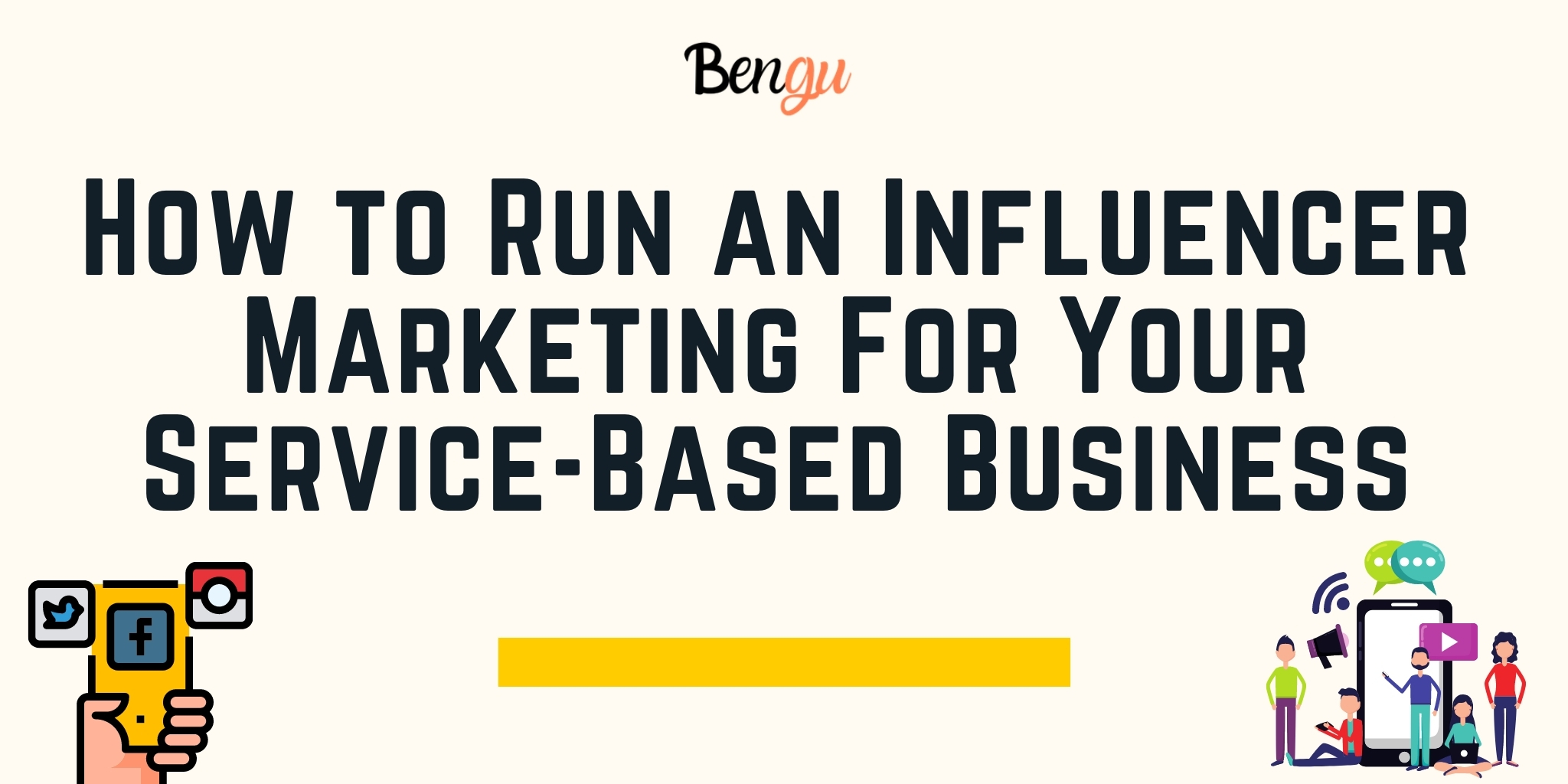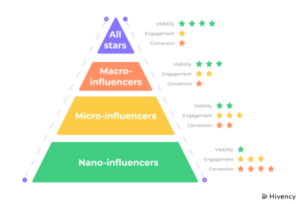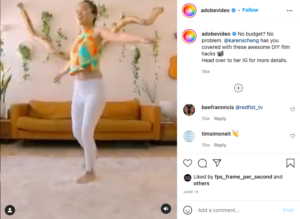If you’re running a service-based business, you can’t just hope people will be interested in what you have to offer. You need to find ways to get prospects to notice your brand. In other words, you need to promote and market your services.
The good news is, there are many ways you can do that.
This guide will discuss how to utilize influencer marketing to generate more leads for your service-based business. Keep reading to discover an actionable framework you can use for running a successful influencer marketing campaign.
What is influencer marketing?
Influencer marketing is a strategy that sees a business incentivizing a person with a large following to promote a product or service to their audience. Often the influencer has a large social media following. Though, you’ll find companies running influencer marketing campaigns with bloggers and YouTubers as well.
Influencer marketing for business works because it uses two very effective techniques:
Word-of-mouth advertising and social proof.
Consumers often believe or value what a person they admire says. Consequently, when an influencer vouches for a service, their audience is likely to trust that brand as well.
Just as importantly for a business, support can translate into sales. A survey by IZEA Worldwide reported 56% of respondents made online purchases based on an influencer’s post on social media. The fact that it’s an effective means of generating revenue is one of the reasons why businesses use influencer marketing.
How to Run An Influencer Marketing Campaign For a Service Business
Now you know what influencer marketing is and why it’s effective. Let’s look at how you can run an influencer marketing campaign to grow your service-based business. Complement these tips with your great service, and you’re good to go!
1. Determine your objectives
The first thing you need to do when setting up your campaign is to define your objectives. The most common goal of an influencer marketing campaign is to generate sales. You might have other campaign goals, though. For instance, you might want to generate leads or increase your social media following.
When setting goals, make sure they are SMART. For example, your aim might be to generate 100 sales from the influencer marketing campaign within 30 days. That is specific, measurable, achievable, relevant, and time-bound.
You’ll need to set key performance indicators for the campaign too.
Your primary KPIs might be sales. But you can have other KPIs as well. For example, you might track how many visitors the influencer sends to your site. The conversion rate might be another KPI you would track.
2. Decide whom to work with
Once you determine your objectives, the next step is to decide whom to work with. Depending on your budget and goals, you can work with everyone from micro-influencers through to celebrities.
As you can see from the graphic above, you can classify influencers based on their reach. Here’s a quick overview of how many businesses and agencies classify influencers:
- Celebrity influencers have one million plus followers.
- Macro-influencers have 500,000+ followers.
- Mid-tier influencers have 50,000 to 500,000 followers.
- Micro-influencers have 10,000 to 50,000 followers.
- Nano-influencers have 1,000-10,000 followers.
Your budget and goals will determine who you work with.
Create a shortlist of relevant influencers for your campaign. The two key factors will be audience size and relevance.
Once you have your list, do your due diligence.
Here are some of the things to consider:
- How frequently does the influencer run campaigns? In general, the more often they partner with brands, the lower the conversion rate.
- How engaged is the audience? Check how people engage with the content they produce. Use relevant tools to identify what percentage of their followers are fake as well.
- How relevant is the content they post to your business? The better the alignment, the higher the conversion rate.
Conducting due diligence involves more than just answering those three questions. At a minimum, you should have an answer to those three questions.
3. Encourage the influencer to contribute original ideas
Influencers generally create content their audience enjoys. You want the influencer to play a role in the campaign. Give them a degree of creative freedom to generate content they think their audience will love.
That’s not to say you no longer have a say in what they do.
The influencers’ content needs to align with your brand guidelines. You also need them to create content that is likely to achieve the campaign goals. Let me give you a real-life example to illustrate my point.
The influencer @karenxcheng ran an Instagram campaign in partnership with Adobe Video. Karen created an amusing video showing her audience how to edit a video so it looks like a person is flying.
The video generated over 62,000 likes and 500 comments. Karen’s audience enjoyed the post where she showed people how to use Adobe Video to create engaging content.
It’s a nice example of how an influencer can create fun content that promotes a company. The marketing team at Adobe probably loved the idea. I’m sure it was Karen, though, who provided the creative spark for the campaign.
Another example is from Sidepost, a home service business that connects people in Australia with local contractors for things all sorts of jobs, from house cleaning to fencing and painting. Here’s what they had to say:
“We provide home services across Australia for a few clients with a large social following. We simply ask them to tell their following about their experience with using our services. It has been fantastic for generating brand awareness and leads, locally and nationwide.” – Phi Dang, Director of Sidepost
4. Create a unique offer for the campaign
An influencer gives you access to a large audience. However, if you want to engage that audience, it’s good to have something to offer. A giveaway, competition, or similar, can be a great way to engage people with your brand.
The giveaway or prize should be structured around the service you offer. For instance, if you’re offering yoga training services, then don’t offer a free backpack. Instead, ask them to announce a yoga retreat to one lucky winner.
Competitions and other incentives are a great way to generate leads from a B2C or B2B influencer campaign. Once people are on your email list, you can develop a connection with your new audience.
5. Decide what to do with your leads.
Before you kick off your campaign, you should spend time considering what to do with the leads you generate. Consider how you position your offer and what happens when a person clicks from the influencer link to your brand page.
On Instagram, the influencer can’t post links on their posts. So, will you ask the influencer to tag you on your Instagram account?
Or, will you ask them to post your website link on their bio?
Once they click on your brand website link, how will you greet your visitors? Are you going to create a landing page customized especially for the influencer? Will you mention the influencer?
Secondly, considering that most influencer followers use their mobiles, your customer journey consideration should be mobile-first. Essentially, you want to do whatever you can to make the flow from social media to your marketing channel feel seamless.
6. Be professional at all times
When dealing with an influencer, act professionally at all times. Your goal should be to develop a lasting relationship with the influencer, especially if you want to run more campaigns in the future.
With that in mind, engage with them as equals. Don’t waste their time with pointless meetings and lots of unnecessary communication. Secondly, remember that they built a large audience because of their creative flair, so be open to constructive input into the campaign.
At the end of the campaign, be sure to share your results as well. Tell them how they did and if the results of the campaign lived up to your expectations.
Wrapping up
Social media influencers have large audiences. They have often invested years growing an engaged online audience. You can utilize social media influencers to generate leads and sales for your business.
This guide teaches you the fundamentals of how to run an influencer marketing campaign for a service-based business. You learned that in influencer marketing for business, you can reach a wider and new audience. That adds to the credibility of your brand and makes you a worthy competitor. Start point
You also learned that you need to choose your influencer wisely. Also, giveaways and unique offers go a long way in generating leads. Complement these tips with great service, and you’ll be on your way to success.

Chris Norton, Founder of insight-led PR agency Prohibition, and Social Media Training. He is a former University lecturer, author of “Share This Too” and listed in the UK’s top 10 PR and social media bloggers.




